

 Spring has not yet quite dared to make an entry on the scene here in northern France. On Thursday we may even get some snow. This is the coldest spring we have ever experienced in Paris. Next we will go to Chablis and to Champagne. It will be interesting to see how worried the wine producers are about frost. How much damage it can do depends on how far the budding has come and perhaps it hasn’t come very far at all in this cold weather.
Spring has not yet quite dared to make an entry on the scene here in northern France. On Thursday we may even get some snow. This is the coldest spring we have ever experienced in Paris. Next we will go to Chablis and to Champagne. It will be interesting to see how worried the wine producers are about frost. How much damage it can do depends on how far the budding has come and perhaps it hasn’t come very far at all in this cold weather.
But spring will certainly arrive, sooner or later. And if spring has been cold is it not so that summer will be warm?
It seems that there will be a bit more than usual to read in this month’s Brief. Take your time when looking through it. You might find some interesting things. We also have quite a few longer articles for you to read. You can find links to them in the text below.
Here are some of the things that you will find in this month’s newsletter.
We recently passed five million articles read on the site.
Some recommendations for good value white Bordeaux wines.
The dates for our next wine tour to South Africa have been fixed; it will be in March 2014. We will soon also have the dates for the next tour to South America (Chile and Argentina), in February 2014. And then there are this autumn’s tours: Bordeaux and the Douro Valley. Take a look and sign up soon!
One of the myths about Sauternes is killed.
Some restaurant recommendations, on Alsace wines, etc, etc.
Enjoy.
Britt & Per
PS: Recommend to your friends to read the Brief !
– – – – – –
What’s on at BKWine Tours
- Bordeaux, 18-22 September
- Douro Valley, Portugal, 23-27 October
- South America: Chile and Argentina, February 2014
- South Africa, 28 February – 10 March, 2014
For more information please contact us on email or on phone (we’re on French time), or go to our wine travel site on www.bkwinetours.com!
We also make custom designed wine tours – on-demand tours for you and a group of friends, for your company (maybe to scout new winegrowers?), for a special event… We can combine winery visits and wine touring with other activities: gastronomic workshops, visit to an oyster farm, truffles hunting, cheese making, and more. More info on the custom designed and bespoke BKWine wine tours and travel here!
Wine tours in Finnish: We also do wine tours in Finnish. And in German, Norwegian, Spanish…
Do you want the latest news and updates on our wine travel activity? Subscribe here! (Second alternative BKWineTours.com)
From the World of Wine
Positive discrimination for organic wines? No thank you.
Treat them as “normal” wines, says Britt in her column and she writes about what really affects the taste and the quality of a wine. And what about the demand for organic wines? Is it still rising?
Read Britt’s column here: It is best to judge organic wines on their quality, not by a philosophy
Viera de Sousa 10 year White Port | Britt’s Wine of the Month
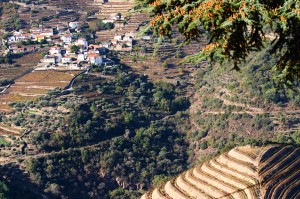 Are you sceptical to white port? Some people are and I was one of them. Until I tasted the 10 year old Viera de Sousa White Port from Sociedade Roncão Pequeno. This is an incredibly good port wine that shows that white port can also be of high quality. The wine is made with long skin contact and foot treading in traditional lagares, giving structure and intense flavors to the wine. After fortification with wine spirit the wine is kept for years in oak barrels of different sizes.
Are you sceptical to white port? Some people are and I was one of them. Until I tasted the 10 year old Viera de Sousa White Port from Sociedade Roncão Pequeno. This is an incredibly good port wine that shows that white port can also be of high quality. The wine is made with long skin contact and foot treading in traditional lagares, giving structure and intense flavors to the wine. After fortification with wine spirit the wine is kept for years in oak barrels of different sizes.
The colour is a beautiful golden brown, lightly oxidized and not unlike an older tawny. The aromas are dominated by nuts, dried fruit and orange. There is a freshness that balances the residual sugar of 114 grams per litre. The grapes are malvasia fine, rabigato, verdelho and the gouveio from the Douro valley gray slate soil. Viera de Sousa 10 years can be drunk either cold as an aperitif or at room temperature after dinner in the same way as you would a red port. www.roncaopequeno.pt
The 5 millionth article read on BKWine
 Recently someone read the five millionth article on BKWine Magazine. If you want to be technically correct we reached 5 million page views since we started counting and collecting statistics. In reality it is probably more. Once upon a time we started what probably was Sweden’s very first wine web site and today we are probably the most visited independent web site in Sweden (and widely read all over the world too!).
Recently someone read the five millionth article on BKWine Magazine. If you want to be technically correct we reached 5 million page views since we started counting and collecting statistics. In reality it is probably more. Once upon a time we started what probably was Sweden’s very first wine web site and today we are probably the most visited independent web site in Sweden (and widely read all over the world too!).
Per explains more about BKWine’s history and evolution and why the “probably” is important: Five million articles read on BKWine… On web statistics
Alsace – dry or sweet?
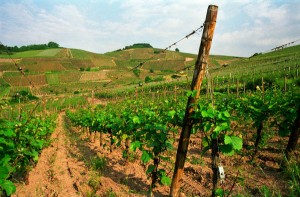 We have probably all experienced a bottle of wine from Alsace that did not go well with the food we served. The reason being, for the most part, that the wine was sweeter than we had expected. This is a problem that producers in Alsace have long been aware of. Some argue that a little residual sugar in the wine is not a problem if the acidity is high. This is true to some extent, but not completely.
We have probably all experienced a bottle of wine from Alsace that did not go well with the food we served. The reason being, for the most part, that the wine was sweeter than we had expected. This is a problem that producers in Alsace have long been aware of. Some argue that a little residual sugar in the wine is not a problem if the acidity is high. This is true to some extent, but not completely.
It used to be easier. Riesling from Alsace was dry. Riesling from Germany was sweet. Today everything has changed and this rule no longer applies. Without knowing the producer or the vintage, it is often a challenge to buy Alsace wines. And this is true not only for Riesling. Pinot gris has almost invariably some residual sugar. But how much? Gewürztraminer can be both bone dry and semi-sweet.
The producers in Alsace now seem to realize that consumer’s uncertainty as to how dry or sweet the wine is should be taken seriously. Some producers already indicate the level of sweetness on the label. Often they use a scale from one to ten, or from one to five, where one indicates a totally dry wine and the 5 and 10 respectively a very sweet wine.
The growers in Alsace are now, according to La Vigne, going to agree on a system of analysis that categorizes wines by sweetness. The aim is to have this system eventually written into the regulations that apply to the appellation Alsace. More: www.lavigne-mag.fr
Wine tour to South Africa in March 2014: dates are fixed
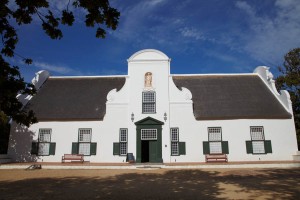 We have now finalised the dates for the news wine tour to South Africa: 28 February to 10 March 2014. We are still working on the details of the program, but you can get an idea of how it will look already on the travel site. But there will be a few changes.
We have now finalised the dates for the news wine tour to South Africa: 28 February to 10 March 2014. We are still working on the details of the program, but you can get an idea of how it will look already on the travel site. But there will be a few changes.
We are for example planning to include Swartland, the newest of the “new” wine regions in south Africa. Many experts consider this to be perhaps the most interesting of the wine regions. More info to come.[divider_flat]
Wine auction of high quality Tokaj wines
Tokaj in Hungary will hold its first wine auction of young wines on April 27. Tokaj wines from quality producers in the region will be featured in the auction. Both dry, semi-dry and sweet aszú and the even sweeter aszú eszencia will be represented. The event is organized by Confrerie de Tokaj. We wish we could be there! When it comes to sweet wines Tokaj is a big favorite.
Click here for more information tokajiborlovagrend.hu
The catalogue can be downloaded here: tokajiborlovagrend.hu
Time to discover white Bordeaux wines from Entre deux Mers
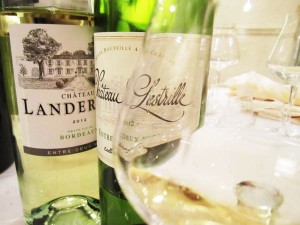 BKWine was recently in the jury for the annual competition for white Bordeaux wines. The wines that competed were all from the appellation Entre-deux-Mers. Here they make fresh and very pleasant white wines in a very reasonable price range. And with a wide range of flavours depending on whether it is sauvignon blanc or sémillon that dominates the blend.
BKWine was recently in the jury for the annual competition for white Bordeaux wines. The wines that competed were all from the appellation Entre-deux-Mers. Here they make fresh and very pleasant white wines in a very reasonable price range. And with a wide range of flavours depending on whether it is sauvignon blanc or sémillon that dominates the blend.
Read more here: Exciting and affordable wines from Entre-deux-Mers in Bordeaux
[divider_flat]
Natural ”plastic cork”
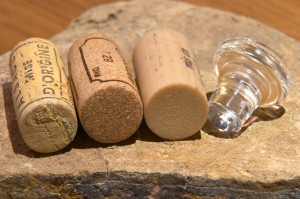 The plastic cork is one of several alternatives to natural cork. Some like it and some do not. Some producers refuse to put plastic in their bottles. While others think it is an excellent alternative for relatively simple wines that are sold to consumers who still want to open their bottles with a corkscrew.
The plastic cork is one of several alternatives to natural cork. Some like it and some do not. Some producers refuse to put plastic in their bottles. While others think it is an excellent alternative for relatively simple wines that are sold to consumers who still want to open their bottles with a corkscrew.
The biggest producer of synthetic corks, Nomacorc, will soon launch an alternative cork that is made with plant based polymers instead of oil based. Nomacorc thinks there is a demand for such a cork that combines the environmentally friendly aspects of the natural cork with the reliability of the plastic cork. They also hope that this new cork will be able to appeal to organic growers.
However, it has been very difficult technically to make this new “natural cork”. Due to these difficulties the cork will not (yet?) be totally made from plants.
The new cork will be launched later this spring. Read more about it here www.thedrinksbusiness.com
Quality wines from South Africa
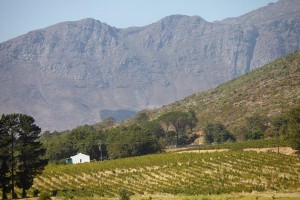 South Africa is not only cheap, simple wines. Many of us, of course, know this already. The Premium Independent Wineries of South Africa (PIWOSA) now wants their top wines to get more attention. PIWOSA currently has 15 members and they are going to launch marketing campaigns in some of the most important export markets for South African wine.
South Africa is not only cheap, simple wines. Many of us, of course, know this already. The Premium Independent Wineries of South Africa (PIWOSA) now wants their top wines to get more attention. PIWOSA currently has 15 members and they are going to launch marketing campaigns in some of the most important export markets for South African wine.
Read more here: A new association to promote South African quality wines
[divider_flat]
El Picaflor – Peruvian restaurant in Paris
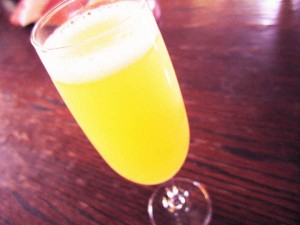 Inspired by our South America trip in February we recently went to a Peruvian restaurant here in Paris, considered one of the very best. And we were not disappointed. We started with a pisco sour – of course! And it was delicious. They use egg white and cinnamon so it tasted a bit different from the ones we have had in Chile. We then chose a variety of Peruvian dishes, served in small portions, to get an idea of the Peruvian gastronomy.
Inspired by our South America trip in February we recently went to a Peruvian restaurant here in Paris, considered one of the very best. And we were not disappointed. We started with a pisco sour – of course! And it was delicious. They use egg white and cinnamon so it tasted a bit different from the ones we have had in Chile. We then chose a variety of Peruvian dishes, served in small portions, to get an idea of the Peruvian gastronomy.
Everything was very good, although my favourite was the flavourful chicken in cheese sauce (aji de gallina). And the ceviche we had for starter, deliciously fresh fish marinated in lime juice. Potatoes in various forms, including sweet potatoes, are used a lot. Peru is known for its fine potatoes. We recommend as well the ice cream and the sorbets made from exotic Peruvian fruit. The service is very friendly and the owner and her staff will be happy to help you with your choice. El Picaflor, 9 rue Lacépède, 75005 Paris, www.picaflor.fr
April 17 is the International Malbec Day
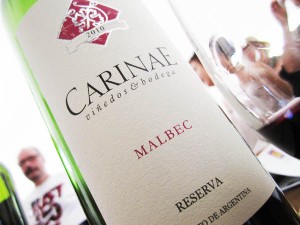 On April 17 we celebrate the International Malbec Day. Maybe you do it by drinking a malbec wine from Argentina or a Cahors from France. You can also choose a Bordeaux, preferably from Cote de Bourg, the district in Bordeaux with the highest proportion of malbec (but still only about 10%). Argentina has the largest plantings of malbec in the world.
On April 17 we celebrate the International Malbec Day. Maybe you do it by drinking a malbec wine from Argentina or a Cahors from France. You can also choose a Bordeaux, preferably from Cote de Bourg, the district in Bordeaux with the highest proportion of malbec (but still only about 10%). Argentina has the largest plantings of malbec in the world.
Read more about it here: Malbec World Day on April 17
[divider_flat]
BKWine Italia in Gambero Rosso and La Repubblica
Åsa Johansson is Swedish but lives in Italy. She is in charge of most of what BKWine does in Italy, she virtually is BKWine Italia, and she sometimes writes here on BKWine Magazine. But she also writes in numerous other publications, even in Italy. Here are a few examples:
- In Gambero Rosso: on the Swedish monopoly and wine sales on the internet Monopoli ed E-commerce. Il mercato del vino in Svezia
- In La Repubblica on the Swedish chef Magnus Nilsson and his remote restaurant Fäviken A tavola con un vichingo
- In Gambero Rosso on Magnus Nilsson and Fävinken. Cosa c’azzecca il ‘cibo vero’ di Magnus Nilsson con la ‘Nuova Cucina Nordica’?
Can you trust web statistics?
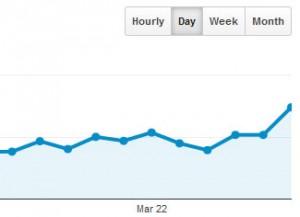 We recently passed the five million page views mark, but can you really trust web statistics? How do you interpret the numbers on visitor statistics? It is difficult, both because of what the numbers actually mean varies and because there is no “official” statistics.
We recently passed the five million page views mark, but can you really trust web statistics? How do you interpret the numbers on visitor statistics? It is difficult, both because of what the numbers actually mean varies and because there is no “official” statistics.
Read Per’s explanations here: Are the statistics true and accurate? And comparable?
[divider_flat]
Sauternes – the death of a myth
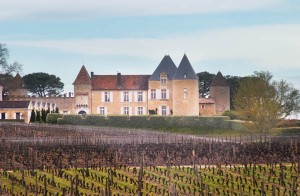 It is sad when something you have always believed in turns out to be false. I suppose I am not the only one having learned early on that the fog that causes noble rot in Sauternes occurs when cold water from the small river Ciron meets the warmer waters of the Garonne.
It is sad when something you have always believed in turns out to be false. I suppose I am not the only one having learned early on that the fog that causes noble rot in Sauternes occurs when cold water from the small river Ciron meets the warmer waters of the Garonne.
Now I learn that this is probably not the reason for the noble rot. Instead the truth is that some parts of the Graves region (where Sauternes is located) has such large water saturation that the moisture from the soil releases steam and thereby creates an ideal environment for noble rot.
This was revealed during the recent mapping of the soil in the Sauternes appellation. The purpose of this mapping is to help producers in choosing for instance the right rootstock when they plant new vines. The soil in the appellation proved to be very varied but with a high concentration of sand soils.
Read more about the mapping here www.lavigne-mag.fr
Italian wine made in Stockholm
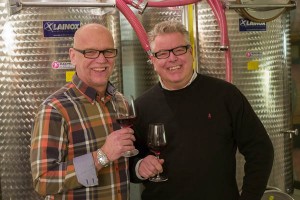 Is this possible? Yes, at the Högberga Wine Factory just 15 minutes away from the city centre of Stockholm, two Swedish wine lovers and now wine makers make wine from grapes brought in from Tuscany in Italy. Britt tells the story.
Is this possible? Yes, at the Högberga Wine Factory just 15 minutes away from the city centre of Stockholm, two Swedish wine lovers and now wine makers make wine from grapes brought in from Tuscany in Italy. Britt tells the story.
Read it here: Two crazy Swedes make Italian wine in Stockholm
[divider_flat]
Planting rights – the circus continues
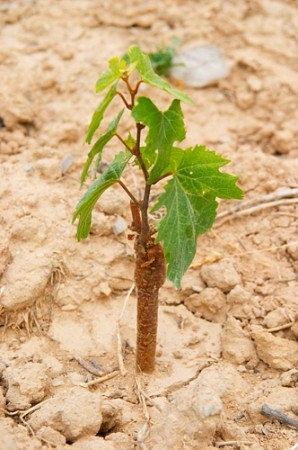 France (and other major European wine countries) is fighting tooth and nail to maintain planting rights in Europe. And even though they have managed to obtain an extension they are far from satisfied.
France (and other major European wine countries) is fighting tooth and nail to maintain planting rights in Europe. And even though they have managed to obtain an extension they are far from satisfied.
The new system of controlled growth (which is not so different from the system that has been in force since the 1970s), should, according to the EU Commission, be applicable from January 2016 until the end of the 2021. And after that the planting of new vineyards will be completely free.
Various French associations, like Cnaoc (Confédération des syndicats de vins AOC) and EFOW (Fédération Européenne des vins d’origine), are of a completely different opinion. Above all, they think that it is too early to abolish planting rights already in 2021.
According to the EU Commission the controlled growth between 2016 and 2021 should allow the European vineyard to grow by 2% at the most. For France, 2 % would mean 16 000 hectares per year. Too much, says the above associations, 1 % is enough.
Maybe they should look a little bit behind their borders and the borders of Europe. The vineyards are actually growing outside of Europe. In countries like China and the rest of Asia, South America, United States … While producers in France (Europe) obviously are happy with what they have.
Read more here www.vitisphere.com
And here’s why planting rights is a bad idea both for wine consumers and wine producers.
New on the travel blog: 114 South American wines, making pisco sour etc
There are many new articles on the travel blog too, for example from our wine tour to Chile and Argentina in February. Here you have the articles. Read them!
- Alsace, travel among grape varieties, terroir, and storks
- 114 wines tasted on the wine tour to Argentina and Chile – all the wines that we tasted on the wine tour
- Languedoc: not just excellent wine and exciting food
- Travel to the wine with BKWine, says Tasteline
- Wine tours “recommended by the Munskankarna Association”! How to choose the best wine tour? – some thoughts on what to think about when thinking about going on a wine tour and what to look at when choosing a wine tour operator
- A wine tour to Chile is not only wine! It is also pisco sour! – Video demonstration…
- Spectacular views, spectacular wines: new wine tour program to the Douro Valley
- Spices in both the food and the wine! | Wine tour to the southern Rhône Valley and Châteauneuf
- Vinofil Recommends: Come to the Southern Rhone Valley
- Brighter times for the tourism industry in sight?
Dry muscat and other white wines from Roussillon
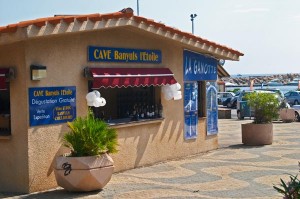 Per has tasted and judged white wines from Roussillon in the wine competition Saint Bacchus. When you participate as a juror in a wine competition you have to trust your own taste and your own opinion. It is an interesting exercise and not always easy.
Per has tasted and judged white wines from Roussillon in the wine competition Saint Bacchus. When you participate as a juror in a wine competition you have to trust your own taste and your own opinion. It is an interesting exercise and not always easy.
Read more here: The Holy Bacchus wine competition in Roussillon.
[divider_flat]
Bistro Bourgogne Sud, Paris restaurant – Food and wine from southern Burgundy | BKWine Pick
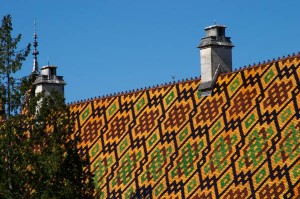 Located in central Paris, this restaurant called Bourgogne Sud really offers exactly what the name indicates: food and wine from the southern part of Burgundy. The chef Gilles Breuil is from Mâconnais and the wine list is filled with goodies from Macon and the nearby Beaujolais.
Located in central Paris, this restaurant called Bourgogne Sud really offers exactly what the name indicates: food and wine from the southern part of Burgundy. The chef Gilles Breuil is from Mâconnais and the wine list is filled with goodies from Macon and the nearby Beaujolais.
You can choose from several excellent Pouilly-Fuissé, Saint Véran and Vire-Clessé. Or if you prefer Beaujolais, a Broully from Dominique Piron, a Morgon from Marcel Pierre or a Chenas from Jacques Lespinasse.
For a starter choose among Burgundian specialties like oeufs en meurette au vin Juliénas (poached eggs in red wine sauce), jambon persillé à l’Aligoté (ham stuffed with parsley cooked in white wine) and the Burgundy starter par excellence, snails. But there is also foie gras, soup of the day and very good dried sausage, directly imported from Macon.
Most main dishes are classics: tartare de bœuf coupe au couteau (steak tartare chopped with a knife), grilled entrecote, beef cheeks à la bourguignonne. The meat comes from the local Charolais of course. If you are still hungry, the local cheese is superb.
Menus from 15.90 euro for lunch and 23.50 for dinner. Friendly and welcoming atmosphere. Bistro Bourgogne Sud, 14 rue de Clichy, 75009 Paris, www.bourgogne-sud.fr
Innovation and quality at Champagne Jacquesson
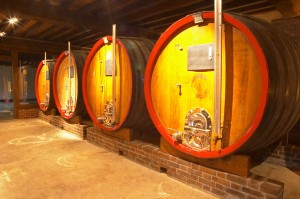 Champagne Jacquesson is an innovative champagne house and a very quality conscious. BKWine’s Ulf Bengtsson recently met the owner, Jean-Hervé Chiquet and took part in a tasting in Stockholm, organized by Jacquesson’s Swedish importer.
Champagne Jacquesson is an innovative champagne house and a very quality conscious. BKWine’s Ulf Bengtsson recently met the owner, Jean-Hervé Chiquet and took part in a tasting in Stockholm, organized by Jacquesson’s Swedish importer.
Read his report here: Making the best blend every year: Jacquesson Champagnes
[divider_flat]
4 new grape varieties: gaminot, beaugaray, picarlat och granita
Four new varieties have been born in France. And it’s really four brand new varieties. With names we have never heard of: gaminot, beaugaray, picarlat and granita. These are crossings that have been made at the request of winegrowers in the Beaujolais and Mâcon. The requests were made in the 1970s, but, as we all know, making a crossing is something very time consuming and complicated. Let us just hope that the need for these new varieties is still there.
Gaminot is a cross between gamay and pinot noir. These grapes already have a past together through Bourgogne Passetoutgrains. Maybe gaminot has something of the same character. According to www.mon-viti.com the wines from gaminot have more colour and texture than pinot noir and the generous fruit of gamay.
Pinot noir and the German grape heroldrebe (which is also a crossing) have been used to produce beaugaray, a grape that will produce very aromatic wines.
Granita has been obtained by a crossing of auxerrois and portugais bleu.
Picarlat is a crossing between gamay and cabernet sauvignon. Picarlat will provide well-structured wines with tannins and colour but also a lot of fruit. It is primarily intended to be used in blends.
If these grapes are approved they will be allowed to be grown throughout France and produce wine in the Vin de France category. Decision will be taken in December this year.
Our book on organic wines awarded prize in Paris
Our book on organic wines was awarded with silver, second place, in the category “World’s Best Educational Wine Book 2012” by the Gourmand World Cookbook Awards in Paris end of February.
Read more here: Press release: The new book on organic wines by Britt and Per Karlsson wins Swedish and international awards
French pinotage?
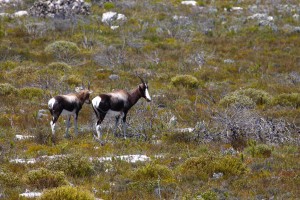 Last year, in 2012, seven new grape varieties were approved for wine production in France. Five of these were foreign varieties that are considered of interest either for the production of French wines or for plant nurseries to grow for export.
Last year, in 2012, seven new grape varieties were approved for wine production in France. Five of these were foreign varieties that are considered of interest either for the production of French wines or for plant nurseries to grow for export.
The five varieties were nebbiolo, nero d’Avola, pinotage, touriga nacional and saperavi, a grape grown in Russia and Georgia. More: www.vignevin.com
[divider_flat]
New design for the rooster and new quality designation in Chianti Classico
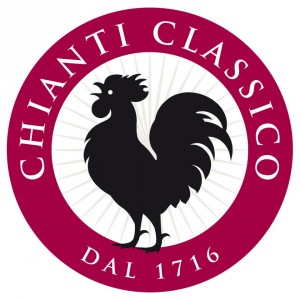 In February, during the primeur tastings of Chianti Classico in Florence, new rules for the appellation was presented as well as a new design for the black rooster found on the labels of Chianti Classico bottles. BKWine’s representative in Florence, Åsa Johansson was there.
In February, during the primeur tastings of Chianti Classico in Florence, new rules for the appellation was presented as well as a new design for the black rooster found on the labels of Chianti Classico bottles. BKWine’s representative in Florence, Åsa Johansson was there.
Read Åsa’s report here: New rooster and new rules for Chianti Classico
[divider_flat]
Machine harvest in Champagne?
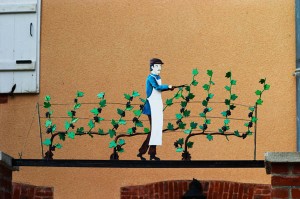 Since 1st of January this year, it has become significantly more expensive in France to hire seasonal workers in the vineyard because of increased employer contributions. In Champagne producers have even begun to discuss the possibilities to start harvesting by machine to avoid hiring temporary workers.
Since 1st of January this year, it has become significantly more expensive in France to hire seasonal workers in the vineyard because of increased employer contributions. In Champagne producers have even begun to discuss the possibilities to start harvesting by machine to avoid hiring temporary workers.
All vineyards today are harvested by hand in Champagne. It says in the rules of the appellation that the grapes must be put uncrushed into the press. With machine harvesting it is very difficult to avoid crushing at least some of the grapes. Today there are machines that are able to keep a large portion of the grapes intact, but not all. www.lavigne-mag.fr
Legendary Stag’s Leap from California
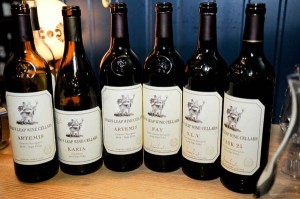 Stag’s Leap has long been known as a quality producer in California. Their Cabernet Sauvignon 1973 became world famous when it was rated number one (and thus won over top wines from Bordeaux), in the Paris Wine Tasting of 1976. Ulf Bengtsson tasted their wines in Stockholm recently.
Stag’s Leap has long been known as a quality producer in California. Their Cabernet Sauvignon 1973 became world famous when it was rated number one (and thus won over top wines from Bordeaux), in the Paris Wine Tasting of 1976. Ulf Bengtsson tasted their wines in Stockholm recently.
Read Ulf’s report here: Stag’s Leap tasting: Karia, Artemis, Fay, SLV and Cask 23
[divider_flat]
More expensive to hire seasonal workers in France
Starting this year, the government in France has annulled some of the exceptions to the social security contributions for seasonal workers that the agricultural employers have previously enjoyed. In other words, it is now more expensive to bring in temporary labour for harvesting, pruning and other work in the vineyards or in the cellar.
The exception that is now annulled is contribution for accidents at work and occupational diseases. These will now have to be paid by the employer. But only if you are generous and pay your workers more than 1.25 x Smic. Smic is the French minimum wage which now is 9.43 euro per hour. If you pay SMIC + 25% or less, the exception remains.
Champagne producers have protested loudly as they apparently pay their seasonal workers more than in other regions. We would guess though, that most people hired for harvesting and other tasks are paid Smic and no more.
Read about the new rules here agriculture.gouv.fr
Who is the biggest supplier of wine to Systembolaget, the wine monopoly in Sweden?
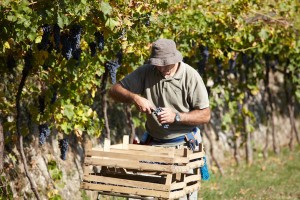 Three countries dominate the sales to Systembolaget. We have compiled statistics showing which countries the Swedes prefer and how their preferences have changes in recent years.
Three countries dominate the sales to Systembolaget. We have compiled statistics showing which countries the Swedes prefer and how their preferences have changes in recent years.
Look at the statistics here: Biggest wine suppliers to Sweden: Italy and South Africa
[divider_flat]
New on the photo blog
We also have a few new articles on the photo blog:
- Something for the cardinals to contemplate
- White smoke from the Pope’s Palace. I vote for good wine.
- Our latest book wins prizes in Sweden and internationally
- Three recent publications: Chateau Figeac, Languedoc and Rhone
- An unusual Burgundian coat of arms in a French magazine
- The photographer’s guide to copyright
- Burgundian wine cellars and old barrels have a certain charm, thinks a Swedish newspaper
Wine events calendar
Send us an email if you have some event you want on the calendar.
Don’t be an egoist! Share with your friends and other wine enthusiasts! Forward the Brief to your friends! Suggest that they sign up for a free subscription !
© Copyright BKWine








